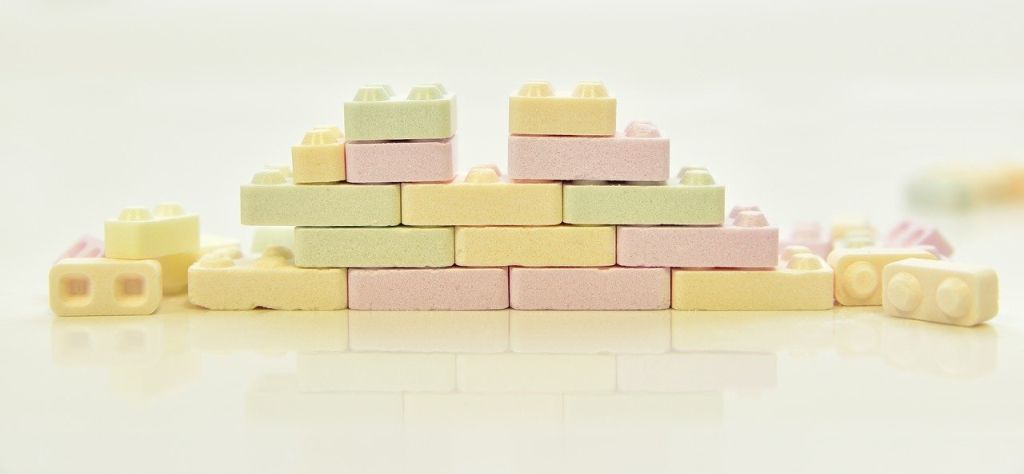If you do not shape your media image, others do it. Did you know that with its help you can increase sales, recognition and positive reputation of your company? So let's take care of it!
- The media image of the company, person, product
- How to create a media image?
- Do you know what your image is?
- Errors in creating a media image
- Controversial media image - examples
- What elements does the media image consist of?
- Useful tools in building a positive media image
- Difficulties in creating the company's image
The media image of the company, person, product
The media image may concern:
- companies,
- persons,
- product,
- organization,
- brand.
This is the way you will be perceived in the media. Good if it complements your natural predispositions, which ensures greater naturalness and effectiveness of the message. You should shape your image in the media consciously, because if you neglect it, others will create it. Often today key business decisions are made on the basis of the company's image. Employees also take it into account when assessing the image of the employer when looking for a job. It turns out that employer brand is of great importance.
How to create a media image?
Today, it is not enough to create a media image visit to the TV studio. The accents in the media world are distributed differently today than they used to be - this Youtube, social media and your own portal may be more effective. By the way, you have control over your media image, while in the world of traditional media a lot depends on lighting, assembly, station and presenter settings, etc.
Best connect the world of traditional and online mediato the former, e.g. by sending a traditional one press release. At first, it may seem as if you are hitting a wall when you try to "hit" the radio or television. However, it is not worth giving up, because such contacts can bear fruit even after years. At the same time, today it is often a strong presence in social-media guarantees a place on the couch on breakfast TV.

Do you know what your image is?
The media image consists of two parts, one of which you are 100% responsible for. The second one is already beyond your control. The first part is all the specific actions you can take - marketing audit, research, and finally campaigns to change or maintain the image you expect. You have an influence on how it looks communication strategy and all other elements of creating a media image. Later, however, you can only observe the effects and keep your fingers crossed for your project - as in the case of the child you release into the world. How customers perceive your media image will depend on:
- the methods you choose,
- how you implemented them,
- the quality of the message,
- communication channels used,
- environment that you have no influence on (competitors' activities, world events, trends),
- customer expectations,
- your company's previous reputation.
This mosaic of factors means that you cannot predict the effects of even the most meticulously planned media image campaign in advance. After a few months of starting it, it is worth researching customer reviews. Only then will you find out what the real image is. Based on this knowledge, you can make modifications to your strategy. Additionally, if you find out quickly that something is not as planned, you can still control the losses by activating appropriate actions public relations.
Errors in creating a media image
Quite a non-obvious mistake that many companies make is following the momentary market fads just so as not to be left behind. If you have a consistent image that has been built over the years, don't sacrifice it for the sake of fleeting novelties. An example is media phases like the Ice Bucket Challange. A brand aimed at young people may benefit from being quickly "plugged in" to the hot trend. However, an already noble enterprise, when in addition to joining the fashionable mania at the last minute, can only lose its importance. A perfect example is the brief presence of one of the top politicians on TikTok. He wanted to be fresh, but when he realized that he was losing seriousness, he quickly gave up the idea. He only introduced confusion about his media image.
The second common, but very painful, mistake is ignoring customers and their opinions. Imagine a company that runs a very expensive media and PR campaign. Negative customer feedback and distrust can frustrate these efforts, and the entire campaign will appear insincere. You will achieve the opposite effect if you give up advanced marketing techniques, but listen to the opinions of customers and take care of their satisfaction. Then your favorable media image will somehow be created by itself - all you need to do is provide opinions, testimonials or photos of customers with the product.

Today, traditional media, in which the brand is cut off from its users, is losing importance. In social media, activities detached from the needs and experiences of customers are not very engaging, and they can backfire.
Controversial media image - examples
A positive media image is the holy grail not only of traditional marketing, but also of the world of politics and personal brands. However, the "bland" and correct image less and less attracts attention and persuades to interaction. The creators of boy bands know about it, in which not only the roles of "polite boys" are cast, but also more colorful characters. An interesting example are the culinary programs in which nice and correct teachers do not arouse emotions. Millions of turnover are brought by the media empires of Jamie Oliver's simple boyfriend, Nigella Lawson cooking fat and unhealthily, or Gordon Ramsay, who swears like a shoemaker.
If you look at marketing products and brands, you can also find examples of such a risky media image here. Among the clothing brands there are those aimed at lovers of surfing culture and beach life, as well as clothes for politically engaged people. If the market research shows that there are customers who accept the risky media image, it is worth considering whether it will bring you more benefits than the conservative approach. For example, a few years ago, vegan brands were niche. However, when it turned out that this is what customers expect, more companies turned their care for the environment into an asset. You can learn more about it from our branding and promotion experts - please contact us.
Have you planned what, where and how your brand should communicate?
We will help you effectively build the image of your company.
What elements does the media image consist of?
The media image does not always consist of the same elements, but there are several elements that are common to each brand. At the very beginning, it should also be emphasized that the media image must be consistent with the values that the company wants to convey. It will be difficult to acquire customers and build a strong brand if your audience receives conflicting information. This can affect the credibility of the company and bring about completely opposite effects. Creating a media image consists in collecting seemingly irrelevant information that together create a specific, well-thought-out and coherent image of the company. What does it consist of?
- Visual communication - illustrations, infographics, photography, video or animation are a great way to communicate with your audience. Today, new media is most often used to create advertisements that reach a wide audience.
- Tongue. It might seem as if it is enough to speak in such a way to be understood. This is a correct assumption, but not complete when it comes to creating a media image. The language of expression is important and it should be adjusted to the target group. First of all, the age should be taken into account, but also the geography and specificity of a given group.
- Branding, i.e. building brand awareness, is of great importance in creating a media image. Effective branding allows you to define the most important distinguishing features of a brand, define what it is today and what it should be in the future.
- The frequency of contact with the environment. Today's recipient likes frequent contact with the brand, but appreciates it even more if it is regular. Determining how often the company wants to communicate with the environment allows you to create an action plan, thanks to which the contact is repeatable and the recipient knows when to expect new messages.
- Tonality, i.e. the consistency of the brand language, allows you to build the right emotional tone in communication with the client. The tone of communication should always be consistent, whether your business is speaking through graphics, videos, or advertisements. This is a good way to position your brand and help your customer make a quick decision if it meets their expectations.
- The image of key people in the company. It can be the president, board members or the best specialists. Just as the image of the company as an organization is of great importance, the image of individual people helps to strengthen it and build relationships between the brand and its recipient.
Useful tools in building a positive media image
The media image can be built in three ways: activities strengthening the material image elements, relational activities and sales activities. If a company wants to quickly create its image, the best solution is to be active in three fields at the same time. The effects will be visible much faster, although you need to prepare for an intense and busy period.
Activities that strengthen the material elements of the image are all that is related to visual identification. Starting from the simplest elements, such as an e-mail footer or logo, to gadgets and graphic materials. Tools that allow you to create a media image on the web are primarily your own website and social media. In each of these cases, you should ensure the consistency of content and graphics and work on the transparency of information. By building the image of an expert, you can use YouTube as a tool to transfer professional knowledge that may be of interest to your audience.

Relational activities are aimed at maintaining contact with brand recipients and building relationships with potential customers. The first step worth taking is customer satisfaction research. Thanks to this, the company can find out what customers value them for and what is worth working on. It is also a good way to promote your brand with their help. We can post positive opinions in printed materials, on the website or in social media. Training and seminars for clients are an interesting tool. Sharing knowledge is always welcome, and customers also feel that they are getting something extra from the company.
Creating a media image also indirectly influences the increase in sales, therefore sales activities should not be omitted. For this purpose, it is worth using marketing campaigns in social media or e-mail marketing. You should also not forget about SEO, i.e. positioning in the network and increasing your reach. You can try your hand at yourself, but the agency will achieve much better results in a shorter time, so you should consider employing specialists.
Difficulties in creating the company's image
Building an image requires work on the part of employees of various departments, which must be coordinated. One of the most common problems is getting involved in a dozen or so projects at the same time, which not only makes it more difficult to supervise each of them, but also the effects may turn out to be disproportionate to the effort put into implementation. The second trap is ineffective activities. It is difficult to call a success a campaign that was carried out effectively, but with too much work or money.
On this occasion, it is impossible to forget about changing the company's image and trying to create a new one. In this situation, the phenomenon of the so-called fixation, i.e. maintaining the previous image, despite the fact that the company has already managed to change the actual image of the company. The second possibility is the boomerang effect, which results from improperly conducted persuasive activities that bring results completely different from the intended ones.
Last, but not least, is the approach to media image as something permanent. Each company will constantly change and develop, following new directions. The image cannot therefore be constant and stagnant. It is easy to notice that the image should change as the company itself changes. It can be a change in the company's formal policy, changes in marketing and inside the company, but also changes affecting the environment in which the company operates. Each of them should cause a smaller or larger - depending on the company's transformation - image correction.

Proper image creation requires constant work. You need to define the goals and assumptions, methods of marketing communication and thoroughly analyze the recipients in terms of their expectations and prejudices towards the company. Creating an image is like developing a company - we should constantly strive for conscious and wise development.

